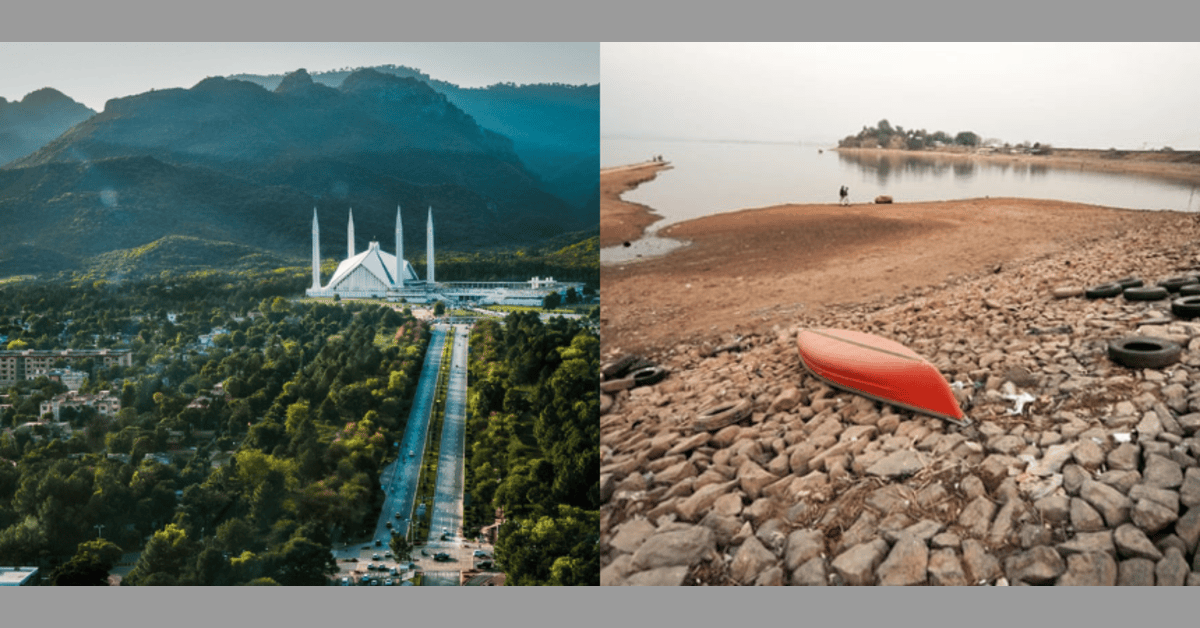The Islamabad water crisis has hit an alarming peak in 2025, sparking fears of a complete water supply breakdown if urgent steps are not taken. From drying dams to failing pipelines, the capital is on the brink — and it’s not just Islamabad. The water crisis in Rawalpindi is also worsening, with both cities struggling to cope with the mounting pressure.
Islamabad Water Crisis Reasons:
As of April 22, Islamabad is running dangerously low on chlorine—vital for water treatment. The Capital Development Authority (CDA) only has stock for one more month, making residents fear that water supply may come to a halt by May. This Islamabad water problem is rooted in decades of mismanagement and poor planning.
Meanwhile, Pakistan’s per capita water availability has dropped by over 70% in the past 70 years—now standing at just 1,017 cubic meters, barely above the global water scarcity threshold.
Reduced Rainfall, Aging Infrastructure & Climate Change
The Islamabad water issue isn’t just administrative—climate change is speeding it up. Rainfall and snowfall were 70% below normal from September 2024 to January 2025, drying up essential sources. Glaciers feeding rivers are melting faster than they can be replenished, and major dams like Tarbela and Mangla are near “dead levels.”
On top of this, old pipelines and regular power outages at pumping stations have severely disrupted the water supply network. Even private housing schemes in Rawalpindi are now rationing water.
People are venting their frustration on social media, demanding immediate action. One user on X warned that only “15 days of water” were left in some reservoirs. Calls are growing to stop new housing developments until Islamabad’s water crisis is under control.
Authorities had promised additional water from Simli Dam last year, but this has proved insufficient. Experts are now recommending long-term solutions like rainwater harvesting and inflatable rubber dams, already successful in countries like China and Japan.
This crisis is more than just a seasonal shortage—it’s a warning sign. From elite resource control to climate inaction, Islamabad’s water future looks grim unless serious reforms are made. Ignoring the Islamabad water crisis now could risk not just the capital’s sustainability but national stability.

